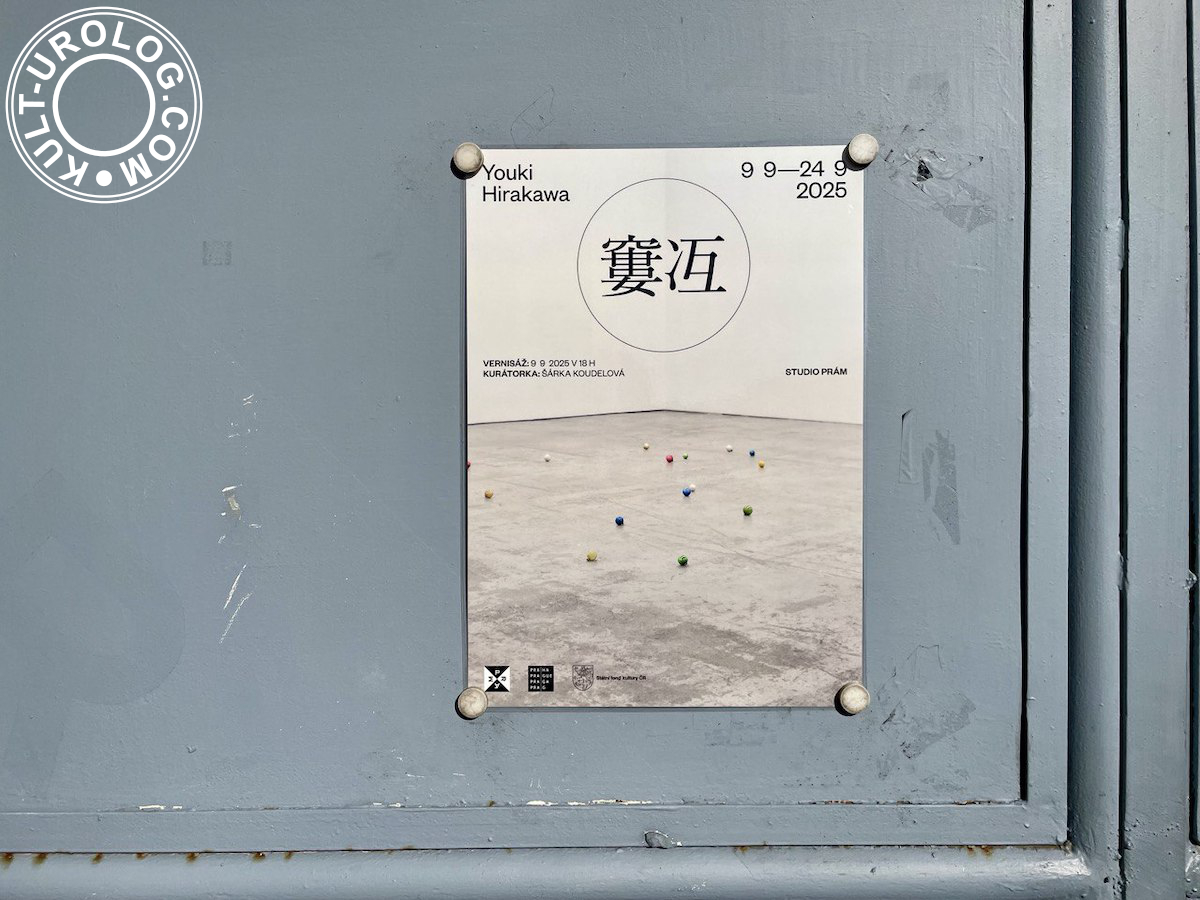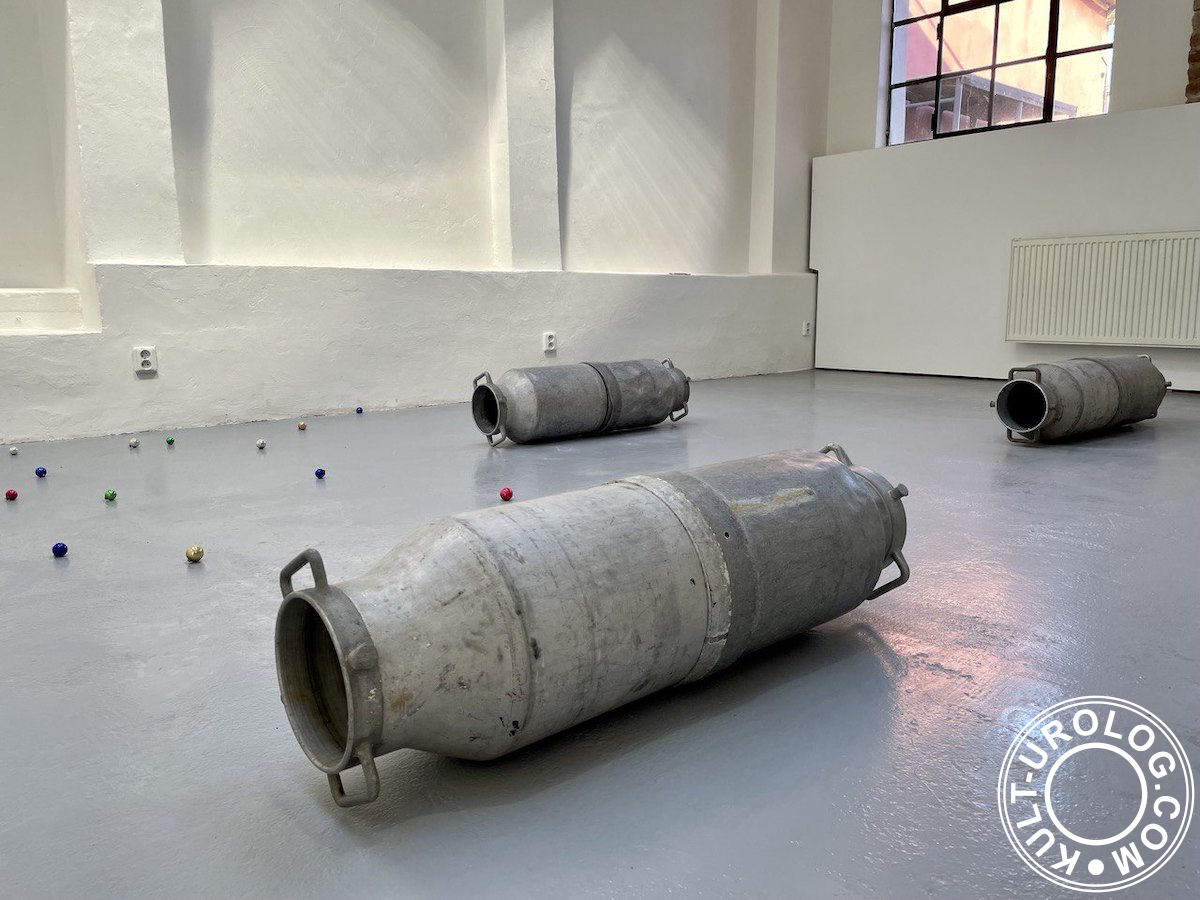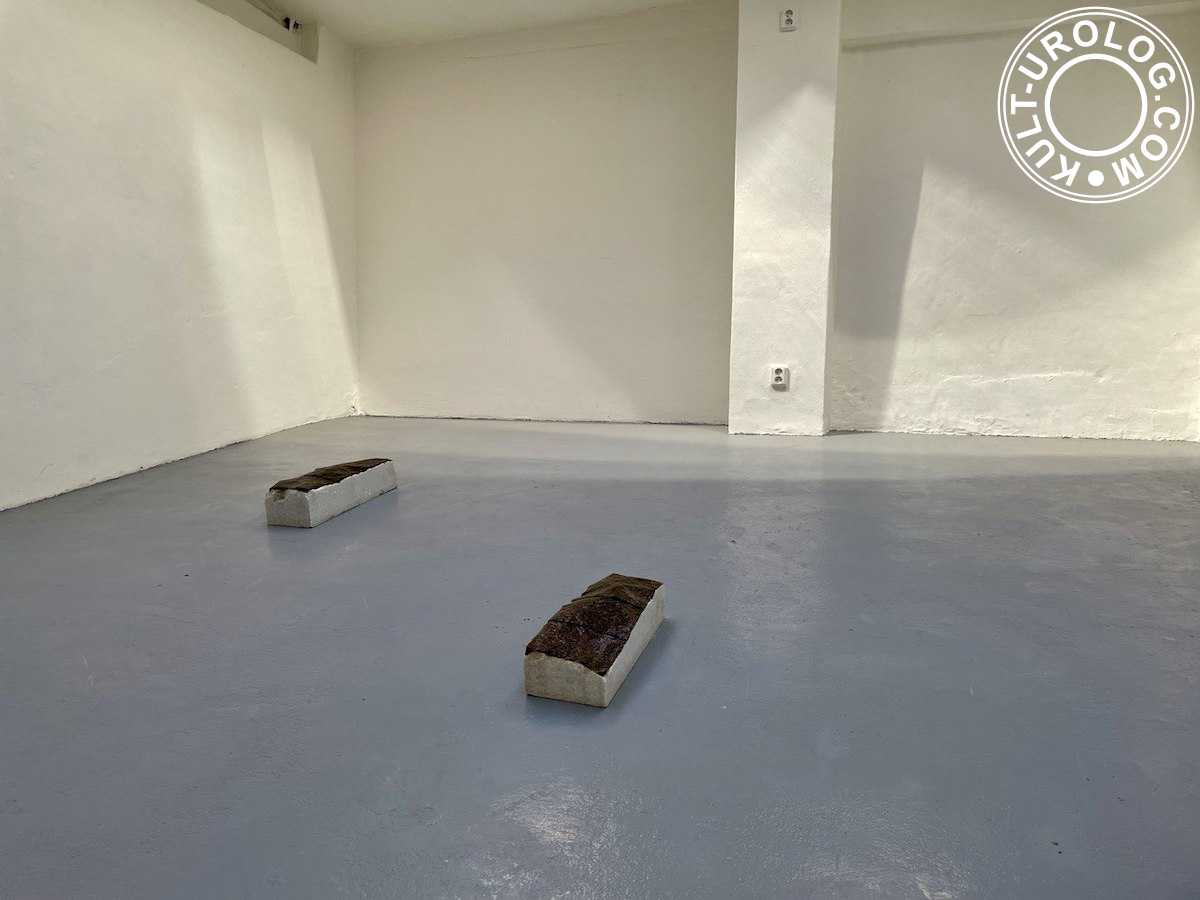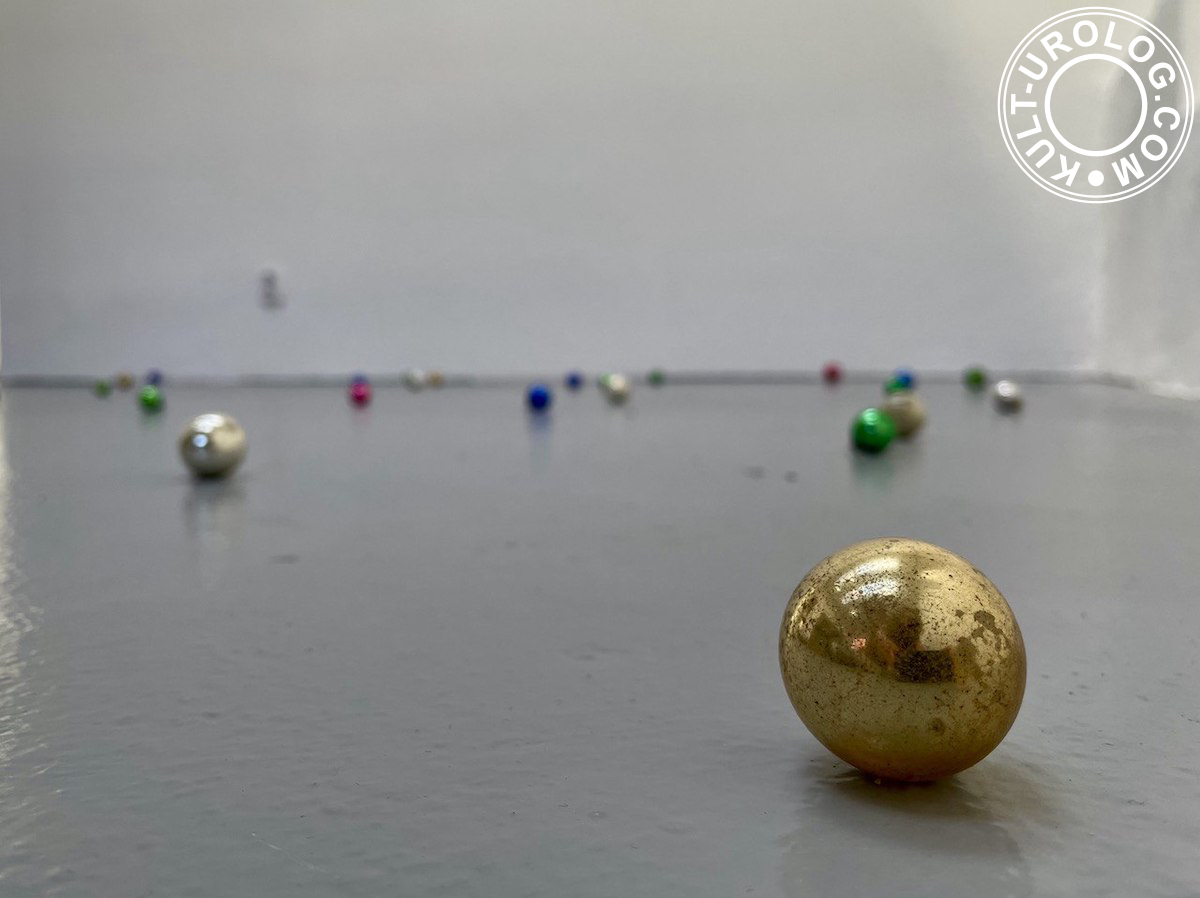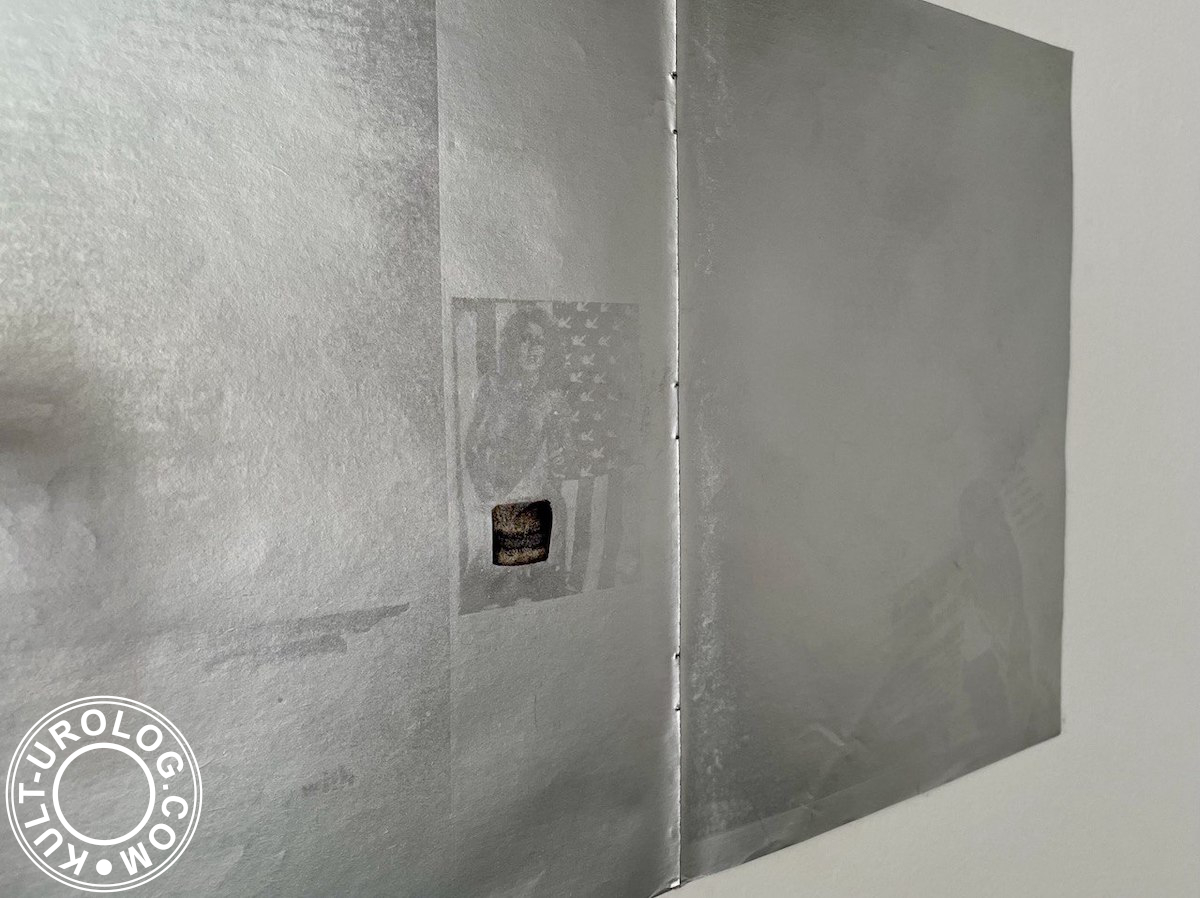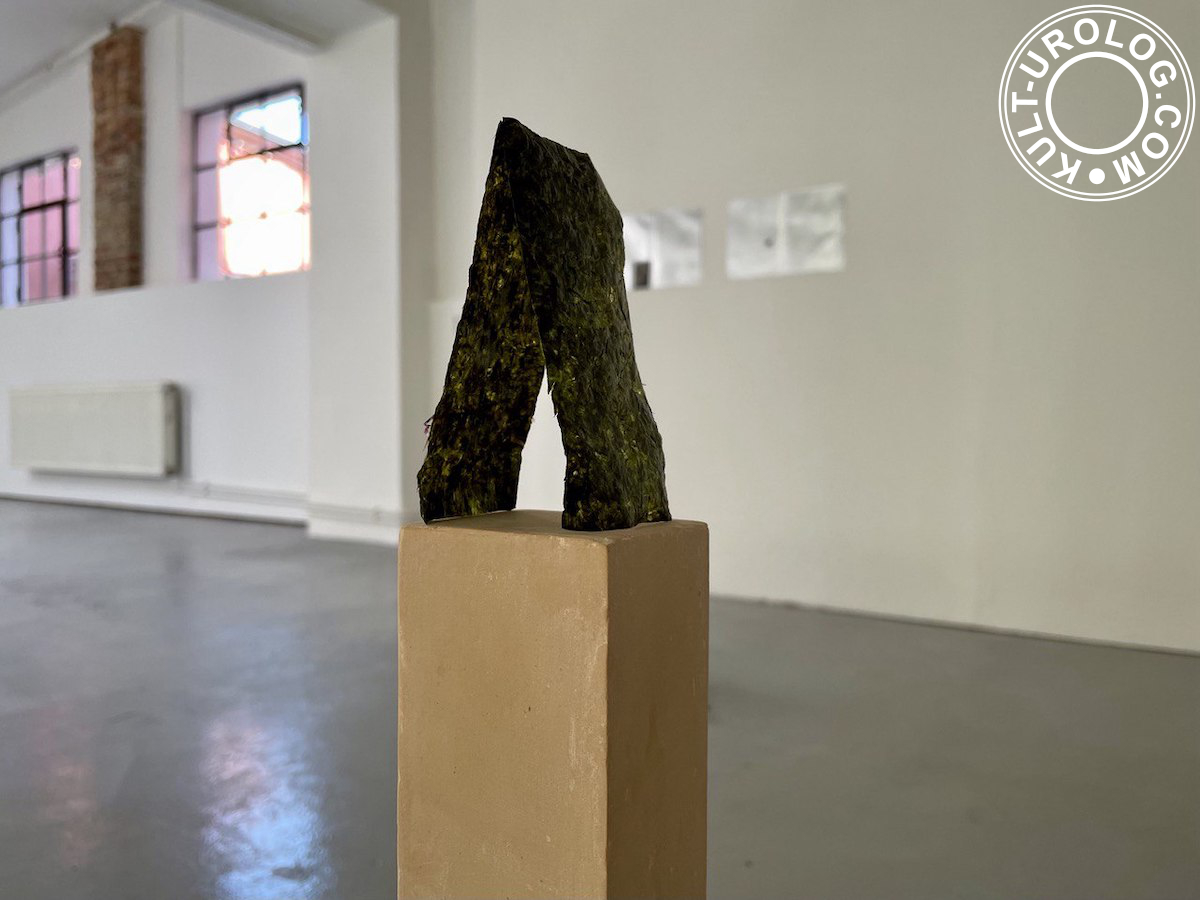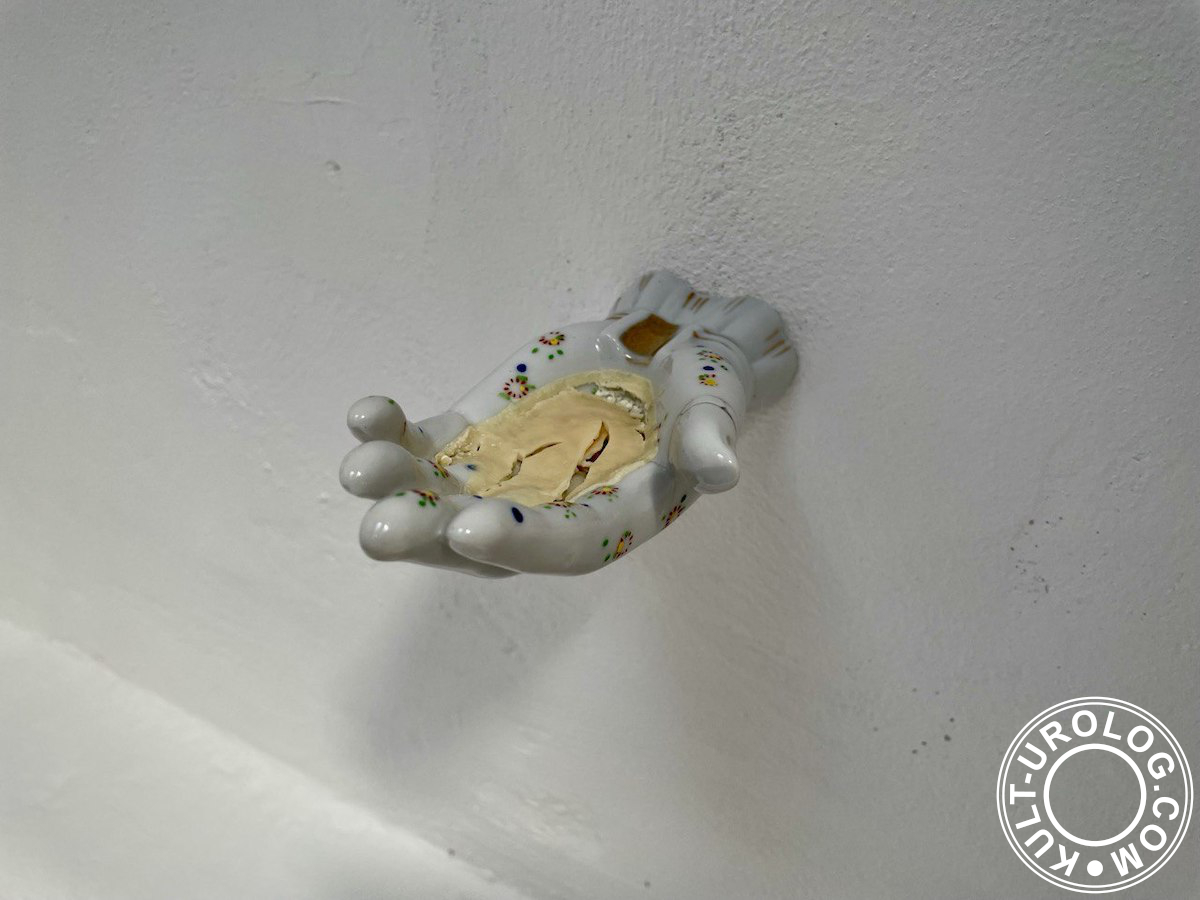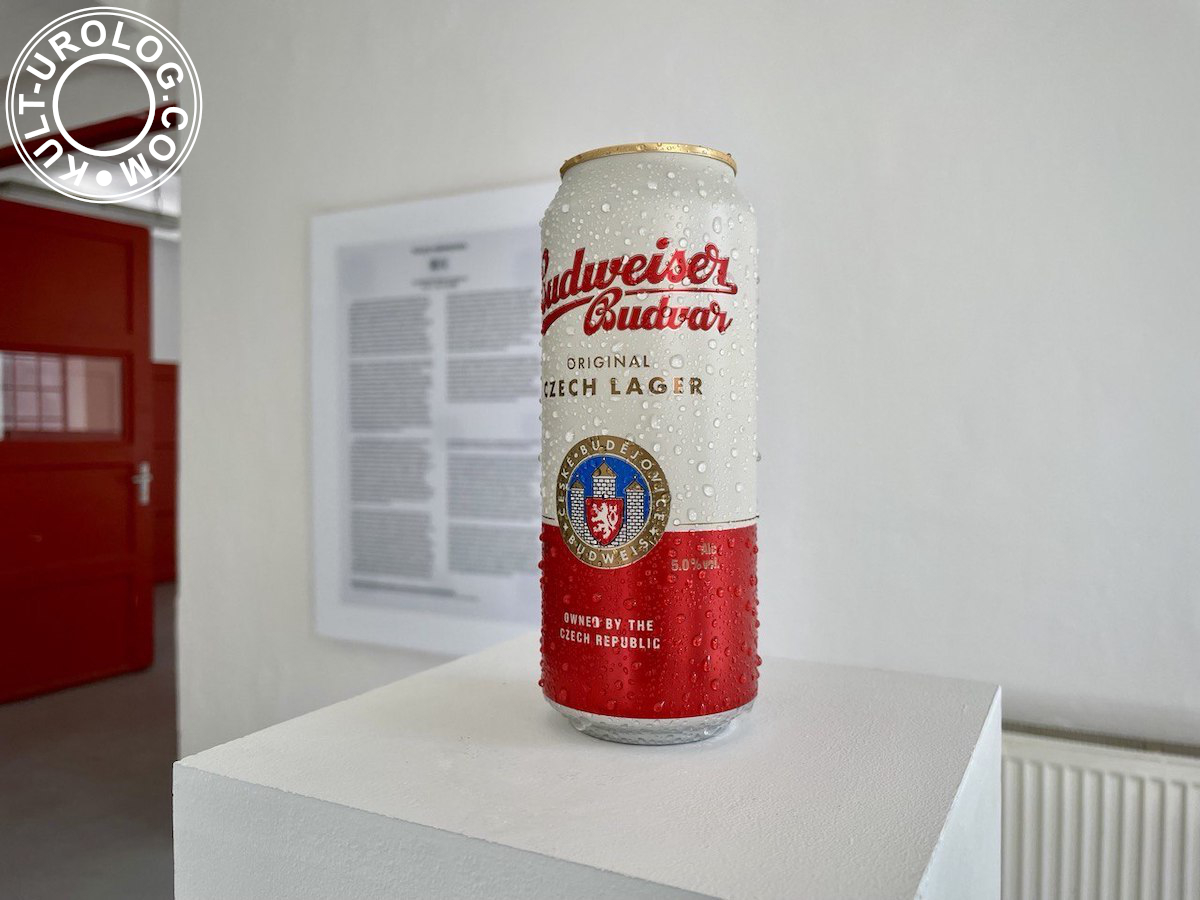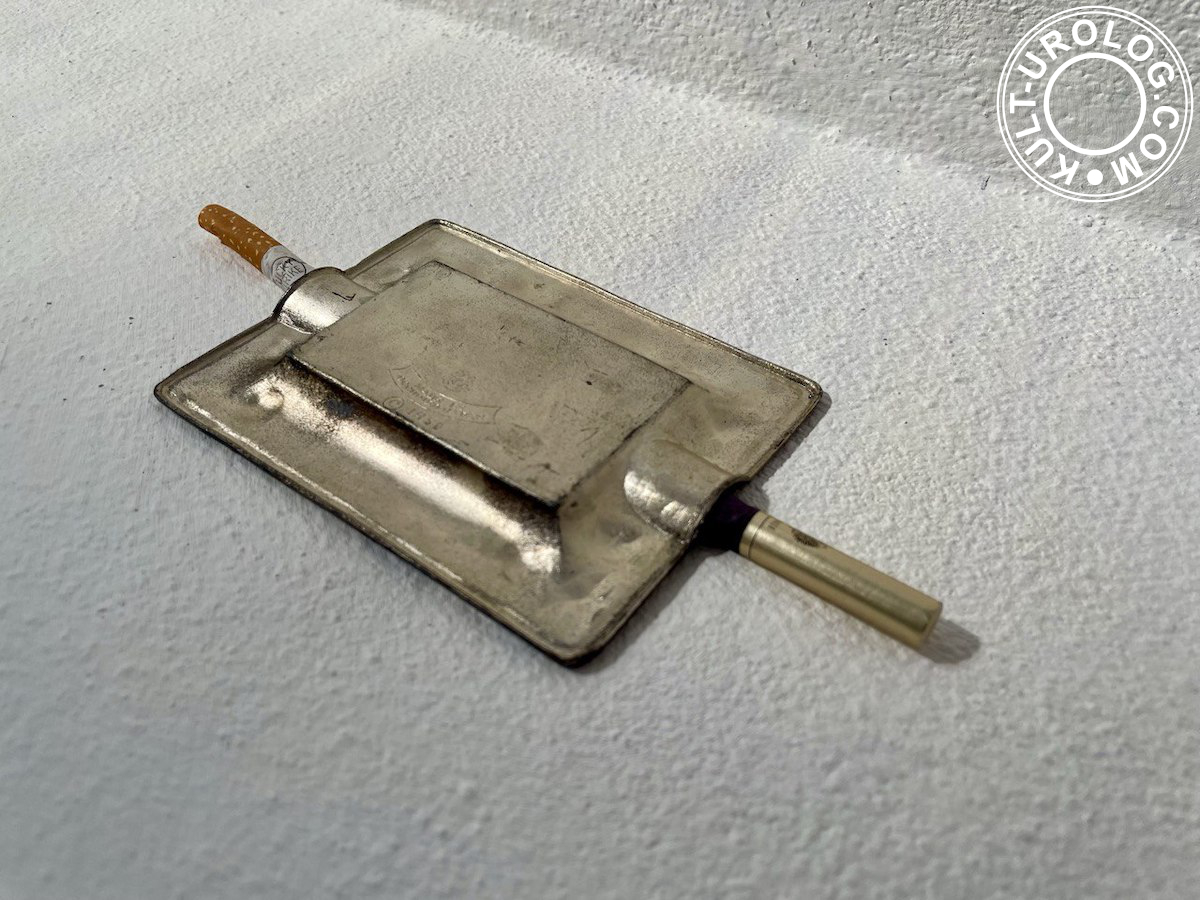My week began with news about a Japanese political party whose founder quit after a crushing election defeat, so it was decided to install AI as their leader instead of some usual option (deputy, for example), and continued with an exhibition 窶冱 by Youki Hirakawa at Studio PRÁM gallery, which also has something to do with AI. And it all fits together very well. Especially with politics.
Because art and politics often go hand in hand, and contemporary art is generally difficult to understand, so politics is a nice medium, and because the exhibition’s description honestly states that objects in the gallery space also work with this theme.
People can trust or distrust AI, implement it into business processes and invest a ton of money in it, criticise it, receive contradictory answers to simple questions from it (especially when it tends to support the user’s point of view, creating a vicious circle of confirmation — a priceless find for people with paranoia), and then doubt the direction humanity is heading. But it’s very hard to ignore AI. And it still will find its place in art, no matter how much artists resist it.
The exhibition’s title is formed from two letters that cannot be pronounced or translated correctly.
It’s a glitch that repeatedly appears after translating Japanese text into English with automatic translation tools and then copying the result from ChatGPT to Gmail. The two strange letters (窶冱) are a combination of archaic symbols from the Chinese characters. They are unreadable, and only Unicode knows, what it wanted to say (or not). Such characters even have a name: mojibake (文字化け, «character mutation»; use Wikipedia to learn more).
So, quoting the gallery’s description: «This ‘in-between space’, where two cultural systems meet, is also a frequent area of artistic exploration for Youki Hirakawa. Despite all human effort, incredibly sophisticated technology, and the global virtual and gastronomic environment, intercultural contact still runs into errors in encoding, mutual prejudice, and food intolerances» and «Youki’s creative approach can be symptomatically called a language that helps to decipher mojibake. He explores everyday objects that have become political or transformed into their own code through their universal emotional charge» (and that’s what the exhibition is about).
The exhibition’s ideological (the description says it is ideological) focus is an installation composed of used milk jugs, entitled Intolerance (2025). Innocent (at first glance) objects that become an emblematic reminder of post-war Japan and the beginning of the US influence on Japanese society.
The occupation gave Japan a new constitution, censorship, and a ban on a long list of typically Japanese things. And obligatory kisses in cinema. And cow’s milk.
No one invaded Japan (the Mongols don’t count, they failed, twice), only Japan went somewhere from time to time, so the occupation was a huge trauma. Of course, there is still a lot to digest (or not to).
There were some borrowings from the Western food preferences (for example, in terms of the popularity of meat) before World War II, but after Japan’s defeat in 1945 cow’s milk becomes part of Japanese everyday life. Suddenly it became a full-fledged industry: the imported dairy lobby, new cattle farms and dairy facilities, and an ongoing campaign promoting the importance of consuming this product (with its magical properties) on a daily basis. And who cares that the average Japanese person’s body wasn’t historically adapted to digesting lactose?
Not everyone is lactose intolerant, but those who are know the uncanny feeling of a stomach about to explode. This is how milk churns became an equivalent of the aerial bombs dropped by the Americans on Japanese cities.
The colourful and glittering Christmas decorations, made during the occupation (East er, 2024, vintage ornaments, made from 1947 to 1952), laid out on the bare floor, also looked like bombs in a ruined and devastated Tokyo, fragile and ready to explode with Western pop culture.
Another association: they were more like scattered beads from a rosary. Which is more suitable for the topic of the Christian religion and Christmas (although «East er» works better with Easter, but we are above this and we are good at reinterpreting meanings, right? also, who cares about the differences, if mass culture took as a basis only the decorative part anyway?).
Actually, bottled milk waiting on the doorstep had appeared in silent films (Ozu’s Days of Youth, 1929, for example), but it seems to be a mere imitation of Europe back then, not something serious. Also, it was recommended in the years before the Pacific War as a dietary supplement to foster a healthier nation (as a part of «borrow the best from the West, do it your own way»).
But in those days it was the charm of another culture, not an industry. Let’s just note that milk wasn’t something new to Japan.
We visited the exhibition ten days after its start, so we didn’t get a chance to see a video projection by the artist (this option was available only once, on the opening), but the gallery space was empty, and the nori and milk (well, I assume it was milk) were already showing how time and atmosphere had affected them.
There was a strong smell of nori in the gallery, actually. Because nature is fair, and there is a Euro-American analogy for the milk intolerance — seaweed, and that’s why (so familiar) stacks of green sheets were among the exhibits. Since for the artist the surface of nori is also an indicator of the difference in humidity between East and West, it was supposed that during the exhibition its original state will be disturbed and changed under the influence of the atmosphere of the exhibition space (the edges will bend, the sheets will warp, and so on; I don’t know whether the smell and any dust, for example, were taken into account).
As a contrast, beer cans covered with artificial condensate (dew from resin droplets, like in advertising photos) looked forever fresh, cool and unaffected by time or temperature. And they could compete for the title of the centrepiece of the exhibition with milk churns.
Not because of some kind of meaning, but because people are simple creatures.
Although this freshness is fake. Perhaps as fake as the glass balls on the floor in the next room (like in an old joke: «Citizens, be careful, fake Christmas decorations have appeared in stores! They look like the real thing, but they bring no joy!»).
It is not entirely clear to what theme the images of naked women (the silicone standard of beauty of the eighties and nineties, that gained an honourable place in utility rooms and barracks all over the world, quite iconic) with the Stars and Stripes backdrop belonged to: to the theme of religion, censorship, or dairy products (or to all the three). And how attractive was this American standard to Japanese audience.
Another question: what, and to what extent, was defined by Western standards in this art. Ready-mades, minimalism, bare white gallery walls, cold artificial light, concrete floors… Nothing exotic (it depends, of course), but the setting was too familiar. In this respect, the gallery space also was a kind of exhibit. Maybe meanings can be conveyed better in an atmosphere like this, if we want to reach a Western audience…
Anyway, it’s not about what is shown, but about what we see, and we will never know what the author really meant, but that’s how it works. Interpretation is everything, as usual.
Curator — Šárka Koudelová, financial support — City of Prague and the State Fund of Culture of the Czech Republic, duration — two weeks (from 09.09 to 24.09), visits — by appointment only, booking — by phone, a book to read after — Mythologies by Roland Barthes (because the interpretation of the idealised properties of Budweiser beer, that become a code for its character and marketing, sounds suspiciously familiar).
